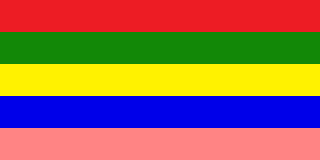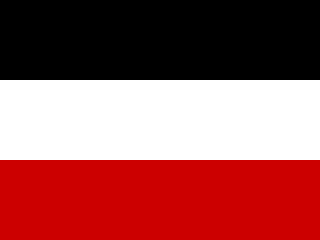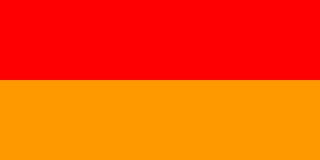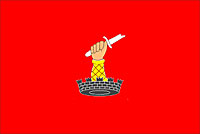
Jhabua is a town and a municipality in Jhabua district in the Indian state of Madhya Pradesh. It is the administrative headquarters of Jhabua District.

Korea State, currently spelt as Koriya, was a Rajput princely state in the Empire of India. After Indian independence in 1947, the ruler of Korea acceded to the Union of India on 1 January 1948, and Koriya was made part of Surguja District of Central Provinces and Berar province. In January 1950, "Central Provinces and Berar" province was renamed Madhya Pradesh state. After November 2000, Korea and the former princely state of Changbhakar became Koriya district of Chhattisgarh state.

Alirajpur is a city in the Alirajpur tehsil in Alirajpur district in the state of Madhya Pradesh, India.

Baghal State, also known as Arki State, was one of the Princely states of India during the period of the British Raj. It covers an area of 312 square kilometres (120 sq mi) and is now part of Arki Tehsil in Solan District of Himachal Pradesh state. Baghal was founded by Rana Aje De in 1310-40 and was acceded to India on 15 April 1948. The capital of Baghal - Arki.
Bijawar is a city the state of Madhya Pradesh, India. It is the administrative headquarters of Bijawar Taluk, and was formerly the capital of a princely state of British India of the same name. The people of Bijawar are demanding the district status from their state government. It is the 53rd proposed district of Madhya Pradesh

Changbhakar State, also known as Chang Bhakar, was one of the small princely states of British Empire in India in the Chhattisgarh States Agency. It included 117 villages and had an area of 2,330 square kilometres (899 sq mi) with a 1941 population of 21,266 people. Bharatpur was the capital of the princely state.

Alipura was a princely state in what is today the Chhatarpur District in the Indian state of Madhya Pradesh.

Saraikela State also spelt Seraikela, Saraikella or Seraikella, was a small princely state in India during the British Raj, in the region that is now the Jharkhand state. Its capital was at Saraikela.

Kishangarh State was a Princely State in central Rajputana territory of British India from 1611 to 1948. It was founded by the Jodhpur prince Kishan Singh in the year 1611.He was given the land in and around Kishangarh by Mughal Emperor Jahangir owing to his loyal services as well as a close family relationship.

Bikaner State was the Princely State in the north-western most part of the Rajputana province of imperial British India from 1465 to 1947. The founder of the state Rao Bika was a younger son of Rao Jodha ruler of and founder of the city of Jodhpur in Marwar. Rao Bika chose to establish his own kingdom instead of inheriting his father's. Bika defeated the Jat clans of Jangladesh which today refers to the north and north-western Rajasthan along with his uncle Rao Kandhal and his adviser Vikramji Rajpurohit and founded his own kingdom. Its capital was the city of Bikaner.

Raigarh was a princely state in India during the British Raj. The state was ruled by the Gond dynasty of Gond clan.

The Chhota Udaipur State or 'Princely State of Chhota Udaipur', was a princely state with its capital in Chhota Udaipur during the era of British India. The last ruler of Chhota Udaipur State signed the accession to join the Indian Union in 1948. Chhota Udaipur shares a history with Devgadh Baria and Rajpipla as one of the three princely states of eastern Gujarat.

Kalahandi State, also known as Karond State, was one of the princely states of India during the British Raj. It was recognized as a state in 1874 and had its capital in Bhawanipatna. Its last ruler signed the accession to the Indian Union on 1 January 1948. The present titular head of the former state is Anant Pratap Deo who resides in the Kalahandi Palace in Bhawanipatna

Udaipur State was one of the princely states of India during the British Raj. The town of Dharamjaigarh was the former state's capital.

Bijawar State was a princely state of colonial India, located in modern Chhatarpur district of Madhya Pradesh.

Jhabua State was one of the princely states of India during the period of the British Raj. It had its capital in Jhabua town. Most of the territory of the princely state was inhabited by the Bhil people, who constituted a majority of the population. The revenue of the state in 1901 was Rs.1,10,000.

Kanker State was one of the princely states of India during the period of the British Raj. Its last ruler, Maharajadhiraj Bhanu Pratap Deo, signed the accession to the Indian Union in 1947.
Bijai Singh was Rana of Alirajpur from 1881 until his death on 16 August 1890.
Jaswant Singh was the Rana of Alirajpur from 1818 until his death in 1862.



















